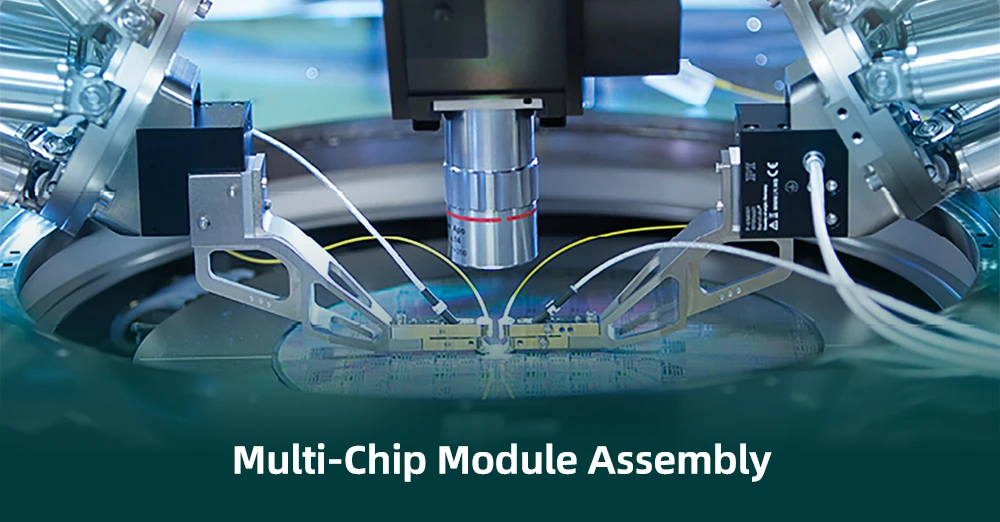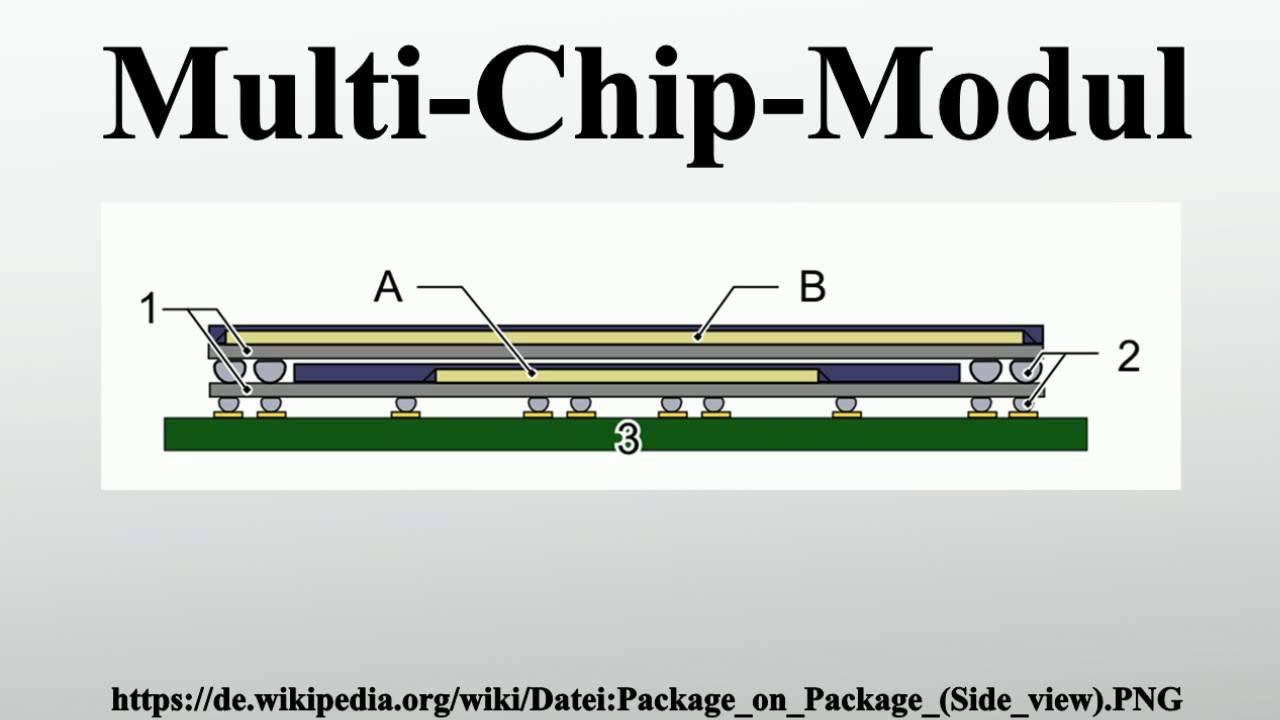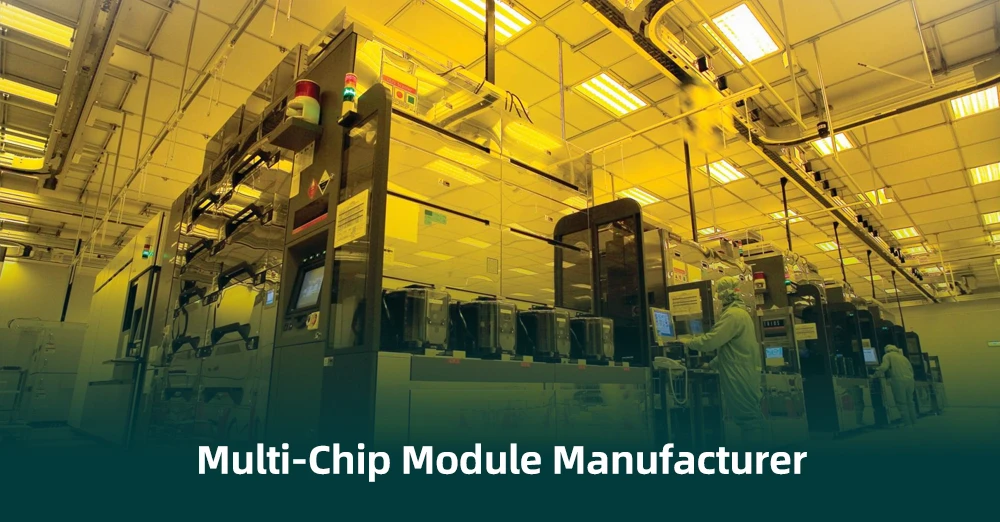Chip manufacturers are constantly seeking ways to pack more computing power and functionality into smaller spaces while keeping costs down.
This race has led to the emergence of multi-chip module (MCM) technology – the integrated packaging of multiple bare semiconductor dice onto a unifying substrate.
Let’s explore what sets multi-chip modules apart and what the future may hold for MCM designs.
What are Multi-Chip Modules?
A multi-chip module (MCM) integrates multiple semiconductors or electronics components into a single, dense package. This contrasts with the traditional single-chip packaging where one semiconductor die is encapsulated per package. MCMs allow for an intermediate level of integration between the single encapsulated die and the printed circuit board.

Multi-chip modules connect multiple bare silicon dies – such as processors, memory, controllers, sensors, and more – onto a common substrate. The substrate holds the dies in place and connects them together via conductive traces etched into the substrate material. The entire assembly is then encased in a protective encapsulant.
What is the Difference Between MCM and SoC?
MCMs and SoCs may seem similar at first glance since they both integrate multiple components into a single package. However, there are some important distinctions between these two technologies.
Design Approach
The key difference lies in the design approach. An SoC amalgamates all active components into one single integrated circuit that is manufactured as one whole unit. Dies are not combined after manufacturing. With MCMs, separate bare silicon dies are integrated after fabrication by mounting them onto a common substrate.
An SoC is functionally analogous to what may have been multiple discrete ICs in earlier generations of electronics. MCMs allow the mixing and matching of multiple ICs and dies sourced from different vendors.
Manufacturing and Yield
Constructing all components on one chip can complicate SoC manufacturing and lower yields as complexity increases. MCMs avoid this by separately producing component dies using established processes with known yields. Known good dies are then integrated, bypassing challenges from combining disparate fabrication process rules.
Scalability
Introducing new functionality into an existing SoC design requires extensive and costly modifications to the integrated circuit masks. Upgrading or altering one component die is much simpler with an MCM since dies can be swapped independently. This enables better reusability of existing die designs across different product generations.
Performance Factors
With shorter distances between dies, MCM substrates provide much higher-density interconnects compared to a PCB. Shorter traces yield improved electrical performance with higher speeds and expanded bandwidth. Careful partitioning and isolation of mixed-signal, radio frequency, and high-speed dies simplifies routing complexity.
While SoCs will continue flourishing in many designs, multi-chip modules offer a flexible complement for complex, demanding systems. MCMs make it easier to deliver feature-rich electronics in accelerated timeframes.
What are the Advantages of Multi-Chip Modules?
There are several key reasons why multi-chip modules are gaining traction in modern electronics:
Increased Density
By combining multiple dies in a single, compact package, multi-chip modules enable higher component density compared to independently packaged components on a printed circuit board. This miniaturization is critical for space-constrained and portable devices.
Simplified Assembly
Rather than soldering many individual component packages onto a PCB, a single MCM unit can be attached, simplifying board assembly.
Enhanced Electrical Performance
Careful substrate design can minimize signal path lengths between dies, enabling higher bandwidth and speeds compared to separate packages communicating through traces on a PCB.
Lower Costs
Consolidating components into an MCM can significantly reduce costs associated with individual die packaging, PCB sizes, assembly times, testing requirements, and more.
What are Multi-Chip Module Types?
There are two primary categories of multi-chip modules: laminated MCMs and deposited MCMs.
Laminated MCMs sandwich conductor traces between insulating ceramic or polymer layers that have cutouts where the silicon dies mount onto the conductors through holes in the insulation layers.
Deposited MCMs use materials like silicon or ceramic for the substrate, upon which conductors and insulating layers are chemically deposited in the desired pathways between the mounted dies.
What is a Multi-Chip Module Assembly?

The multi-chip module (MCM) assembly process involves manufacturing and assembling the bare semiconductor dies onto the substrate to produce the integrated module. There are several key steps.
Die Preparation
The silicon dies must first be manufactured separately by semiconductor foundries according to the component design requirements (processors, memory, controllers, etc). The die is produced without individual encapsulation or casing.
Die Attachment
The bare silicon dies are precisely placed onto the MCM substrate in the planned layout to optimize electrical connections, thermal performance, etc. The dies are mounted in either flip-chip fashion with bump connections or wire bond style. Precision die bonders automate accurate component placement.
Electrical Connection
Underfill epoxy reinforces flip chip connections. For wire bond dies, small wires are attached between bonding pads on the dies to connection points on the substrate. This completes the electrical integration between the different dies via the traces in the substrate.
Encapsulation
The assembled dies on the substrate are encapsulated, typically with an epoxy-based molding compound. This creates a protective casing around the multi-chip module, keeping the components intact and isolated against environmental factors and mechanical stresses.
Testing and Qualification
The fully assembled MCM unit then undergoes testing, qualification, and burn-in processes to verify performance and meet specifications before shipment for integration onto printed circuit boards and final devices.

What are the Applications of Multi-Chip Modules?
Some common applications making use of multi-chip module technology include:
●Smartphones and tablets
●Wearable devices
●Internet of Things (IoT) devices
●Drones and robotics
●Medical devices
●Automotive electronics
●High-performance computing
●Aerospace avionics
As electronics strive toward ever greater capabilities in ever smaller sizes, multi-chip modules offer an avenue to integrate more functionality within confined hardware. MCMs bring devices one step closer toward a system-on-package architecture.
How to Find a Multi-Chip Module Manufacturer?

For companies seeking to outsource MCM design and assembly, there are contract electronics manufacturers who specialize in multi-chip modules. Some key criteria when selecting an MCM manufacturer include:
●Experience with different MCM substrate materials like silicon, ceramic, laminates or other custom materials.
●Capabilities with flip chip, wire bonding, die stacking, RF modules, MEMS integration, and other assembly methods.
●Miniaturization expertise to achieve highly compact multi-die density.
●Design for manufacturing knowledge with chip packaging interactions.
●Quality certifications such as ISO13485 for medical devices.
●Prototyping abilities combined with high volume capacity.
Conclusion
As the demand for smarter, smaller electronics continues erupting across nearly every industry, multi-chip module technology provides an avenue for progress through efficient integration. MCMs pack more semiconductor dies into single unified footprints, lowering costs while advancing capabilities. The future looks bright for electronics manufacturers who leverage multi-chip modules and system-on-package design.
A multi-chip module (MCM) integrates multiple semiconductors or electronics components into a single, dense package. This contrasts with the traditional single-chip packaging where one semiconductor die is encapsulated per package. MCMs allow for an intermediate level of integration between the single encapsulated die and the printed circuit board.
- Increased Density
- Simplified Assembly
- Enhanced Electrical Performance
- Lower Costs
Some common applications making use of multi-chip module technology include:
●Smartphones and tablets
●Wearable devices
●Internet of Things (IoT) devices
●Drones and robotics
●Medical devices
●Automotive electronics
●High-performance computing
●Aerospace avionics










